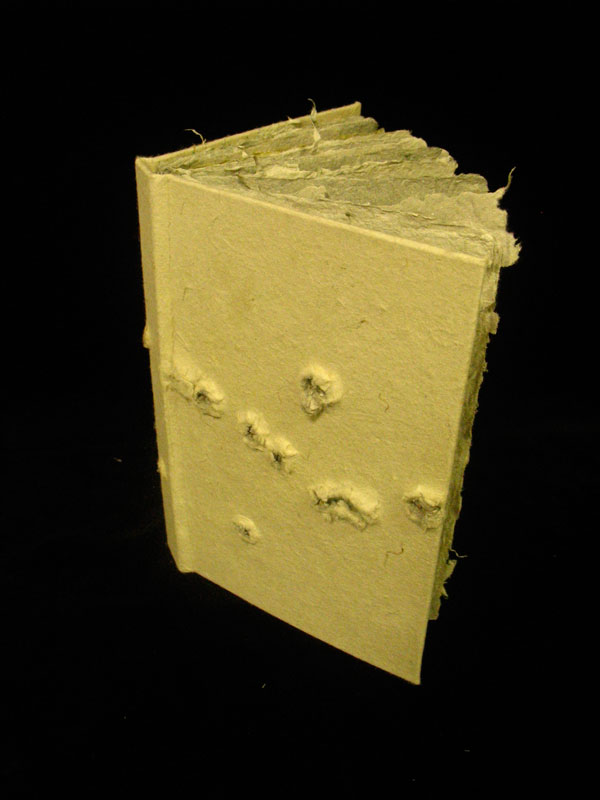Combat Paper in Burlington
The efficacy of art as a form of political protest is questionable at best. There is just something too precious and removed about art galleries and museums, a cultural context that tends to neutralize the desired message. The utility of art as a form of expression for those conflicted about the experience of war, however, […]

“The Combat Paper Project”
The efficacy of art as a form of political protest is questionable at best. There is just something too precious and removed about art galleries and museums, a cultural context that tends to neutralize the desired message. The utility of art as a form of expression for those conflicted about the experience of war, however, is another thing entirely. Soldiers making art in response to their combat experiences is a very powerful and empowering endeavor.
Currently (through April 10), the Firehouse Gallery operated by Burlington City Arts in Burlington, Vermont, is featuring Combat Paper, an exhibition and workshop series focused on the work of the Combat Paper Project. The project, started in 2007 by artist and Iraq War veteran Drew Cameron in collaboration with book and papermaker Drew Matott of Green Door Studio in Burlington, is a kind of latter-day swords-into-ploughshares enterprise in which veterans transform their old combat uniforms into hand-made paper suitable for making prints, portfolios, and publications that deal with their feelings about war.
Combat Paper includes work by Cameron, Jon Turner, Eli Wright and other members of the Combat Paper Project as well a series of papermaking workshops. The art is riveting enough in content – books and maps with bullet holes, images of soldiers and helicopters – but it is the material transformation from the stuff of war to the makings of peace and art that elevates it from political statement to personal testimony.
Combat Paper is embodied art. Veterans cut their own uniforms into small pieces, pulverize them, and then cook the fiber in a caustic solution of soda ash and sodium carbonate to “liberate the rag.” The resultant pulp is then pressed into paper. Combat paper has been used to make artists’ books, broadsheets, and prints. Perhaps the signature Combat Paper image is Cameron’s self-portrait entitled “Breaking Rank,” a line of six camo-dressed soldiers in which the fourth is is in the process of cutting away his fatigues. Tod date, sixty-five veterans of World War II, Korea, Vietnam, Bosnia, Desert Storm, Iraq, and Afghantistan have participated.
I would characterize Combat Paper, the project and the exhibition, as not so much “anti-war” as an aesethetic attempt to get “beyond war.” It is about veteran warriors coming to terms with and sharing what they have seen and done and what they know. Though it is the product of Iraq War veterans, it involves veterans of other 20th and 21st century wars as well.
“Combat Paper,” states the project website, “is made in honor of all men and women involved in War. It is created as a means of dealing with the experiences; it offers hope and support to those who are currently involved in combat, in offering that when they return home there is a vehicle for them to express their experiences and reclaim their lives.”
Combat Paper has been featured in exhibitions coast-to-coast, but this is the project’s first major exhibition in Vermont.
“We’re bringing it all home, which is great for us,” says artist Drew Cameron.
Firehouse Gallery, 135 Church St., Burlington VT, 802-865-7165 Green Door Studio, 18 Howard St., Burlington VT, 802-316-1124
Edgar Allen Beem
Take a look at art in New England with Edgar Allen Beem. He’s been art critic for the Portland Independent, art critic and feature writer for Maine Times, and now is a freelance writer for Yankee, Down East, Boston Globe Magazine, The Forecaster, and Photo District News. He’s the author of Maine Art Now (1990) and Maine: The Spirit of America (2000).
More by Edgar Allen Beem

